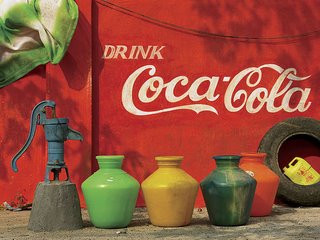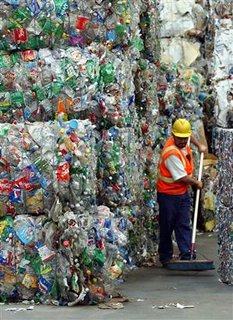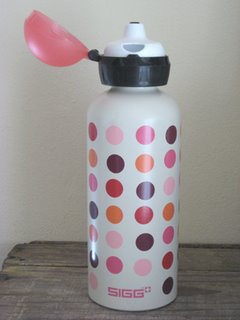Always Coca-Cola
Wow. OK, no product to push today, just an interesting article about everyone's favourite poison. Excerpt below, from
India Resource
India Resource
Coca-Cola Crisis in India
Communities across India are under assault from Coca-Cola practices in the country. A pattern has emerged as a result of Coca-Cola's bottling operations in India.- Communities across India living around Coca-Cola's bottling plants are experiencing severe water shortages, directly as a result of Coca-Cola's massive extraction of water from the common groundwater resource. The wells have run dry and the hand water pumps do not work any more. Studies, including one by the Central Ground Water Board in India, have confirmed the significant depletion of the water table.
- When the water is extracted from the common groundwater resource by digging deeper, the water smells and tastes strange. Coca-Cola has been indiscriminately discharging its waste water into the fields around its plant and sometimes into rivers, including the Ganges, in the area. The result has been that the groundwater has been polluted as well as the soil. Public health authorities have posted signs around wells and hand pumps advising the community that the water is unfit for human consumption.
- In two communities, Plachimada and Mehdiganj, Coca-Cola was distributing its solid waste to farmers in the area as "fertilizer". Tests conducted by the BBC found cadmium and lead in the waste, effectively making the waste toxic waste. Coca-Cola stopped the practice of distributing its toxic waste only when ordered to do so by the state government.
- Tests conducted by a variety of agencies, including the government of India, confirmed that Coca-Cola products contained high levels of pesticides, and as a result, the Parliament of India has banned the sale of Coca-Cola in its cafeteria. However, Coca-Cola not only continues to sell drinks laced with poisons in India (that could never be sold in the US and EU), it is also introducing new products in the Indian market. And as if selling drinks with DDT and other pesticides to Indians was not enough, one of Coca-Cola's latest bottling facilities to open in India, in Ballia, is located in an area with a severe contamination of arsenic in its groundwater.




